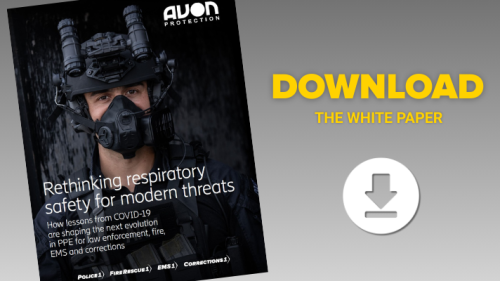The Worcester City Council opted out of the state residential sprinkler law despite support from the city manager and fire chief, saying local codes already meet or exceed standards
UC San Diego’s ALERTCalifornia network last year detected 1,668 fires, including 636 before any 911 call
Master Firefighter Preston Fant is the first DeKalb County firefighter to die in the line of duty
The Columbia Township Fire Department now has full-time coverage on every shift and is planning for future expansion with two new parcels of land
FDNY battled the fire at a former coffee warehouse in Brooklyn, attacking from the exterior and with the Marine 9 fireboat
EXCLUSIVES
SPECIAL REPORTS
UPCOMING & ON-DEMAND EVENTS
Lessons from agencies mastering real-time collaboration under pressure
From checklists to command-post placement, leaders must build the foundation for confident command
Turn fragmented systems into seamless collaboration during critical incidents
Battalion Chief Steve Conn and Lt. Bassel Ibrahim detail mayday lessons from real-world events and progressive training
This informative webinar will provide key information on how two public safety agencies (one police and one fire) funded comprehensive smartphone programs that provided issued devices to all personnel.
Exploring what the survey data reveals about how fireground tactics are executed and how safety culture is perceived
Get the insights, expert advice and tools to help your agency score big on grants
Best practices for building your next apparatus – or fleet
Los Angeles-area chiefs detail lessons from the January firestorm to guide all-hazards response
Hear from EMS systems and leaders turning the promise of whole blood into a proven practice for trauma patients
Learn valuable strategies to achieve the station you need
How to turn data into actionable insights that drive smarter decisions and safer outcomes
INDUSTRY INSIGHTS
Firefighters are protected from hidden station hazards with direct exhaust capture, air purification and real-time monitoring
Learn to make the most of in-vehicle connectivity, AI and IoT
What you need to know now to be ready when the next funding window opens
How lessons from COVID-19 are shaping the next evolution in PPE for law enforcement, fire, EMS and corrections
WATCH NOW
Detailing the evolution of heat detectors in the late-1800s to modern-day “smart” smoke detectors
OFF DUTY
Our all-in-one resource for life beyond the uniform, from fitness and health to money matters and entertainment, and more.
Stack the deck in your favor now, before the health battles become unwinnable
Long shifts, stress and sleep loss undermine firefighter readiness and safety, but new data-driven approaches offer hope
Their quick thinking after a series of sudden deaths led to the discovery of cyanide-laced Tylenol — and a turning point in consumer safety
On National Punctuation Day, test your knowledge of punctuation
Discover how firefighters can improve sleep and fight fatigue with simple changes like air filters, blackout curtains and humidity control
Ruby has been assigned to Minneapolis Fire Station 7 for three months when she finally responds to her first house fire
How new federal tax rules could affect your paycheck, deductions and long-term savings
Calculate your net worth, evaluate your cash flow, and develop your strategies and tactics to take action
From paddleboarding and kayaking to fishing in remote areas, discover the gear, training and self-defense strategies outdoor enthusiasts need to stay safe on the water
PRODUCT RESEARCH CATEGORIES
The FireRescue1 Fire Station Equipment product category features a variety of firehouse and fire station products, such as fitness equipment, gear racks and furniture.
The FireRescue1 Fire Wildland Products category features information, product listings and resources covering a variety of equipment, such as wildland PPE, packs, fireline nutrition, water delivery systems, emergency lighting, fire shelters and more.
The FireRescue1 Uniforms product category is a collection of information, product listings and resources covering a variety of apparel, footwear, and gloves.
The FireRescue1 Fire Communications product category features products and information for researching fire communications and covering a variety of products, including radio interfaces and mobile and stationary technologies.
Apparatus & Specialty Vehicles are essential to fire service operations, supporting firefighting, rescue, and emergency response missions. This topic covers fire engines, ladder trucks, rescue units, and specialized vehicles designed for specific hazards or environments. Departments rely on these vehicles for transporting personnel, equipment, and water to incident scenes. Understanding their capabilities, maintenance needs, and deployment strategies is key to operational readiness. Related discussions on Fire Station Equipment highlight the tools and resources needed to support these vehicles. Explore articles on specifications, safety features, and innovations that improve response effectiveness.
Duty Gear includes the tools, accessories, and personal equipment firefighters carry to perform their jobs safely and efficiently. This topic covers belts, holsters, flashlights, knives, gloves, and other gear essential for daily operations and emergency response. Quality, durability, and proper fit are key factors in selecting the right duty gear for the demands of the fire service. Related information on Personal Protective Equipment focuses on specialized gear that provides critical protection. Explore articles on product features, maintenance tips, and innovations that enhance performance and readiness.
Specialized Response & Rescue involves advanced skills, equipment, and tactics for handling complex or high-risk incidents beyond standard firefighting. This topic covers technical rescue, hazardous materials response, water rescue, urban search and rescue, and other specialized operations. These missions require extensive training, coordination, and the right resources to ensure responder and public safety. Related content on Incident Command details the leadership and decision-making processes critical to managing these events. Explore articles on capabilities, best practices, and innovations that support effective specialized response.
Eye Protection is essential for safeguarding firefighters and EMS personnel from debris, chemicals, heat, and other hazards encountered during operations. This topic covers safety glasses, goggles, face shields, and integrated helmet visors designed to meet industry standards. Proper selection, fit, and maintenance are key to ensuring clear vision and effective protection in all environments. Related content on Personal Protective Equipment addresses additional gear that supports overall responder safety. Explore articles on product features, compliance requirements, and innovations in protective eyewear for emergency services.
Respiratory Protection safeguards firefighters and EMS personnel from inhaling harmful smoke, chemicals, and airborne particles during operations. This topic covers self-contained breathing apparatus (SCBA), air-purifying respirators, and related safety equipment designed to meet industry standards. Proper fit, training, and maintenance are critical to ensuring effective protection in hazardous environments. Related content on Personal Protective Equipment addresses additional gear essential for responder safety. Explore articles on equipment features, inspection procedures, and best practices for using and maintaining respiratory protection in emergency services.
Specialty Vehicle Accessories enhance the functionality, safety, and efficiency of fire apparatus and other emergency vehicles. This topic covers equipment such as lighting systems, storage solutions, communication devices, and scene support tools designed for specific operational needs. Proper selection and installation of accessories improve response capabilities and crew safety. Related content on Apparatus & Specialty Vehicles explores the primary vehicles these accessories support. Explore articles on product features, maintenance tips, and best practices for integrating specialty vehicle accessories into public safety operations.
FEATURED EDUCATION
Critics say 200 hours of training will require firefighters to work nights and weekends
The recruits recently completed a 165-hour course which spanned more than four months
The commission approved a $134,472 Assistance to Firefighters grant recently that will pay for 35 firefighters’ EMT training and 21 firefighters’ paramedic training













































